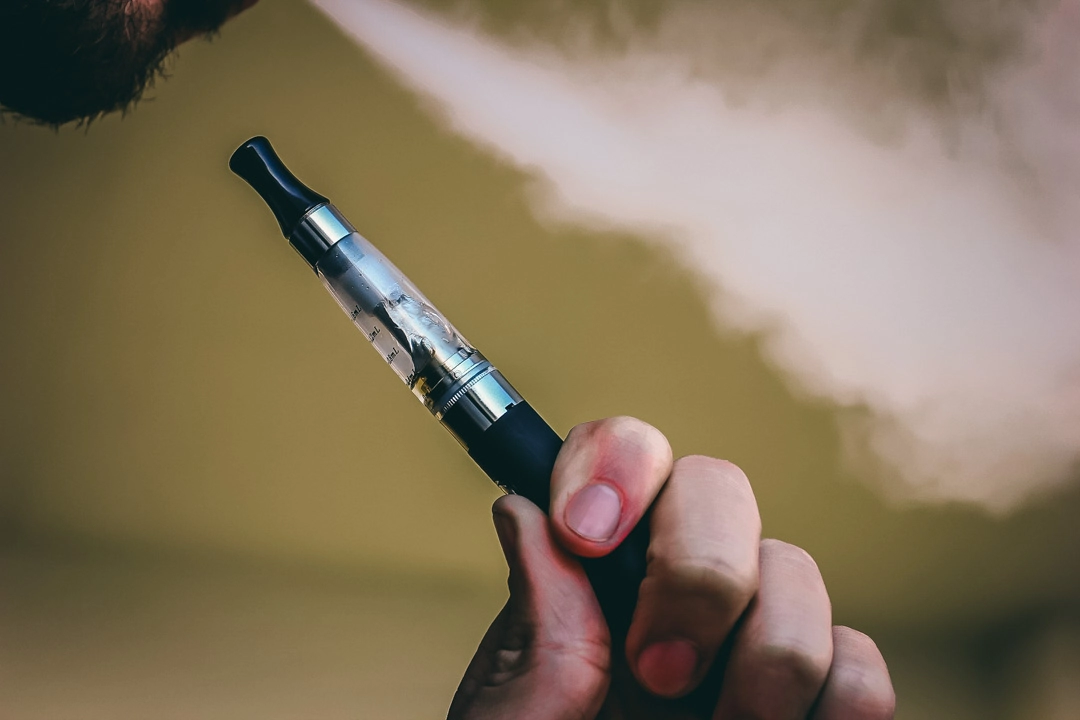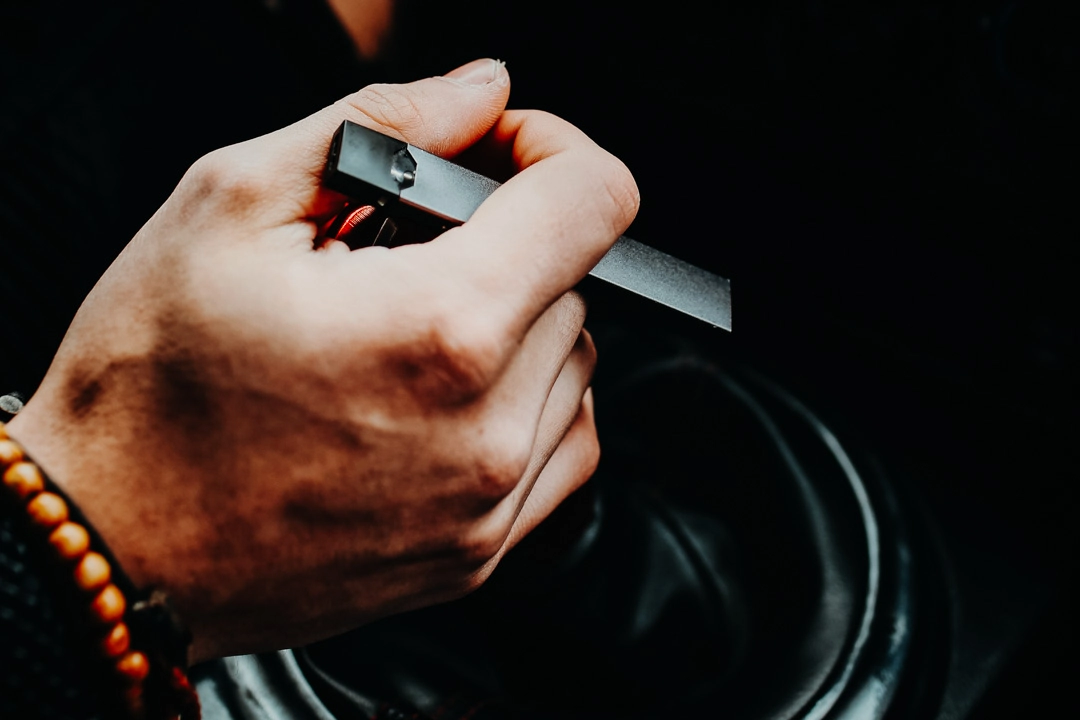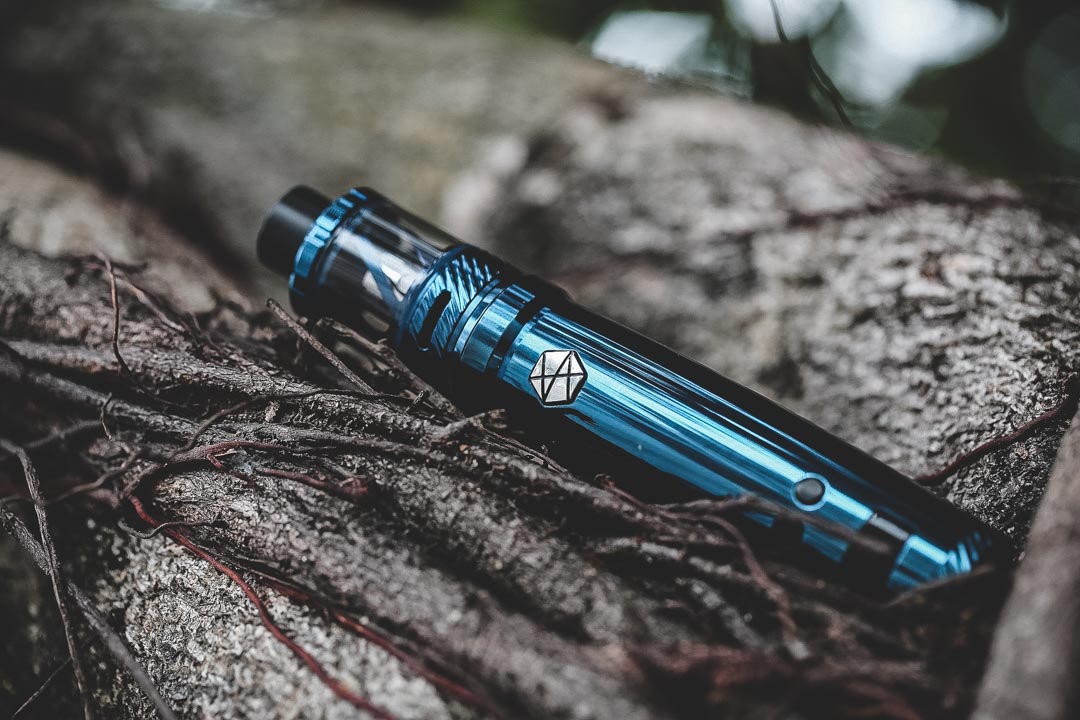QUICK LINKS
Starting your vaping journey can be intimidating. With so many new terms and gadgets to learn about, it’s normal to feel overwhelmed. But don’t worry – this guide will teach you everything you need to know to start vaping safely and enjoyably.
What is Vaping?
Put simply, “vaping” refers to inhaling vapor produced by a vaping device, also known as an electronic cigarette (or e-cigarrette). These handheld electronic devices heat up a liquid, commonly called e-liquid or vape juice, to create an inhalable aerosol vapor.
E-liquid typically contains vegetable glycerin (VG), propylene glycol (PG), flavorings, and nicotine – though low or zero nicotine juices are also available. By heating this liquid, a vape device will produce a vapor that can be inhaled, similar to smoking. But unlike traditional cigarettes, e-cigarettes don’t burn tobacco and produce smoke.
Vaping provides an experience similar to smoking for smokers looking for an alternative to inhaling cigarette smoke. It also allows for easy customization of nicotine levels and flavors.

The Parts of a Vape
While specific designs vary, most vaping devices share some common components:
- Battery – Provides power to heat the coil and e-liquid. Vape pens often use built-in batteries, and can be referred to as a 510 vape battery. While a vape mod will typically use removable lithium ion batteries.
- Vape tank or pod – Holds the e-liquid and includes the coil and wicking that heats and vaporizes the liquid. Vape tanks are refillable, while pods are replaced when empty.
- Atomizer – The assembly including the coil, wick, chimney, and juice channels. Alternative term for tank.
- Coil – The metal heating element that vaporizes the e-liquid. Low resistance coils produce more vapor.
- Wick – Absorbs the e-liquid and brings it to the coil. Usually made of cotton, silica, or ceramic.
- Mouthpiece – The end you place to your mouth to inhale the vapor.
- Drip tip – The mouthpiece used on more advanced setups like RDAs. Allows you to drip e-liquid directly onto the coil.

Types of Vaping Devices
There are several main categories of vaping devices:
Closed Pod Systems
Pod vapes are affordable and easy to use, making them great for beginners. Pre-filled pods snap into a small battery housing and are replaced when empty.
Open Pod Systems
Open pods provide the convenience of pre-filled cartridges but allow you to choose your own e-liquid.
Vape Pens
Vape pens feature refillable vape tanks and more powerful vape batteries than pods. Many mimic the size and shape of a pen. They provide a balance of customization and portability.
Vape Mods
Vape mods use high capacity removable batteries and allow for extensive customization. They enable advanced vaping techniques like temperature control. Mods come in single to triple battery configurations.
All-In-One Vape Kits
Vape kits bundle all necessary components in one. An AIO vape kit is a convenient option as everything needed to start vaping is included. Most kits contain a mod, tank, batteries, charger, coils, tools, and manual.

Vaping Techniques
There are two main vaping techniques to know:
Mouth to Lung (MTL)
This style mimics smoking by first pulling vapor into the mouth before inhaling into the lungs. It provides a tight draw and strong throat hit. MTL vaping uses high resistance coils and works best with high nicotine e-liquids.
Direct to Lung (DTL)
Direct lung vaping involves inhaling vapor directly into the lungs without holding it in the mouth first. It requires wide airflow and sub-ohm coils. DTL vaping produces large clouds using low nicotine e-liquids.
Learn more about MTL vs DTL vaping.
How to Vape Properly
Follow these tips to inhale a vape properly and have an enjoyable vaping experience:
- Start with an MTL vaping technique if switching from cigarettes for a more familiar feel. Gradually experiment with a direct lung draw.
- When using a new vaping device, start at low wattage and slowly increase to find your optimal power setting.
- To inhale vape properly, take slow inhales of 3-5 seconds. Quick, sharp puffs can cause flooding and spitback.
- Wait 10-15 seconds between puffs to allow your coil to re-saturate with e-liquid and prevent dry hits.
- Keep your vape juices stored properly to avoid nicotine oxidation and degradation of flavors.
- Change your coil every 1-2 weeks to keep vapor tasting fresh. Be gentle when installing coils to avoid damaging them.
- Always prime new coils by adding a few drops of e-liquid directly into them before vaping. This prevents dry hits.
- Clean tanks regularly and replace cracked or damaged parts for best performance.
- Adjust airflow to balance flavor and vapor production. More airflow cools the vapor but dilutes flavor.
- Drink plenty of water when vaping to stay hydrated.

Choosing Your First Vape
Here are some tips for selecting your first vaping device:
- Consider a disposable vape, vape pen or pod system for their simplicity if you’re a total beginner. They require minimal maintenance.
- Opt for refillable tanks over pre-filled pods to enjoy a wide variety of e-juice flavors.
- Stick to reputable brands known for quality. Read vape reviews before buying.
- Get a device with variable wattage/voltage to fine-tune your vape. Fixed output devices offer less flexibility.
- Ensure your battery has enough capacity for your usage needs. Lower capacity equates to more frequent charging.
- Select e-liquids with nicotine strengths based on your smoking habits. Heavier smokers may prefer higher nicotine juices.
- Pick e-liquid flavors you find appealing. Many vape stores allow sampling e-juices before you buy.
- Consider kits that include multiple coils, spare parts, and tools for better value.
Finding Your Ideal E-Liquid
With countless flavor options available, choosing an e-liquid can be challenging. Here are some factors to consider:
- PG/VG ratio – PG provides more throat hit, while VG creates bigger clouds. A mix of 70PG/30VG or 60PG/40VG is a good starting point.
- Nicotine strength – If coming from cigarettes, 12-18mg/ml nicotine is common. Decrease as needed.
- Throat hit – The “harshness” when inhaling. Determined by PG ratio and nicotine level. Too much can cause coughing.
- Flavor choices – Go for appealing sounding flavors. Fruity, dessert, menthol, tobacco, candy, drink – options are endless.
- Reputable brand – Stick with transparent juice makers who provide lab test results. Avoid unknown bulk e-juice.
- Price – E-liquid ranges from $10-$30 per 30ml. Watch for sales. Higher price doesn’t mean better quality necessarily.
- PG/VG allergies – Try 100% VG or PG free juice if you have reactions to either base ingredient.
The goal is to find a liquid you enjoy and delivers a satisfying nicotine level. You’ll likely go through some trial and error at first. Taste is subjective so not every juice will work for you.
Learn more about what vape juice is, and also how you can make your own vape juice.

Vaping Safely
While vaping is generally safer than smoking, precautions should still be taken:
- Use quality vaping batteries from reputable suppliers. Avoid counterfeits.
- Don’t charge batteries overnight or unattended. Follow the manual and use the proper charger.
- Store batteries in a case to prevent contact with metal objects. Damaged batteries can explode!
- Never use mechanical mods with low resistance coils and insufficient battery ratings. This is dangerous.
- Avoid vaping at excessively high wattages. It increases risk of dry hits and burns.
- Do not modify or tamper with any vaping product. Use as intended.
- Keep e-liquids away from kids and pets as ingestion can be toxic.
- Report any issues with vaping products to the FDA.
- Follow TSA rules when traveling with vaping devices and juices.
Exercising caution allows you to vape safely. However, risks can never be fully avoided. Vaping is not risk-free, just far less risky than smoking combustible tobacco.
Learn more about Vaping vs Smoking, and whether vaping is bad for you vaping.
Advanced Vaping Techniques
Once you become comfortable with the basics of vaping, you may want to try more advanced techniques:
- Temperature Control (TC) – TC capable mods allow you to set a precise temp rather than just wattage. This prevents dry hits.
- Squonking – Squonk mods feed e-liquid up to the coil from an internal squeezable bottle so you don’t have to drip as often.
- RDAs – Rebuildable dripping atomizers provide amazing flavor. But you’ll need to build your own coils and drip often.
- RTAs – Rebuildable tank atomizers give you the ability to create custom coils with the convenience of a tank.
- Making coil builds – Constructing your own coils allows for complete personalization. But requires knowledge of ohms law and usage of tools like coil jigs.
- Vape tricks – Some advanced vapers learn to blow Os, jellyfish, tornadoes and other artistic vapor formations. Not required for enjoyment though!
Take your time progressing to more complex setups. Mastering basics first ensures proper techniques.
Vaping Etiquette
- Be mindful when vaping in public. Not everyone wants to be exposed to vapor or see cloud chasing.
- Ask permission before vaping indoors around other people. Respect facilities’ vaping policies.
- Hold vapor in for a few seconds before exhaling to reduce secondhand exposure. Cloud chasing without concern for surroundings is rude.
- Don’t vape where smoking is prohibited. While not the same, bystanders can’t easily differentiate.
- Keep conversational vaping topics appropriate around non-vapers, especially children.
Is Vaping Right For You?
Vaping can be an enjoyable hobby and provide a safer way to consume nicotine. But don’t feel pressured to start if you don’t already smoke.
If you do want to make the switch from traditional cigarettes, vaping allows you to inhale vapor with less harm. With so many devices and e-liquid options available, you’re bound to find a setup that suits your needs and preferences.
It’s normal to be overwhelmed starting out. Take your time and do your research. Read vaping blogs and watch video reviews to become more familiar. The vaping community is also extremely helpful for newbies.
So explore what this rapidly growing industry has to offer. You may discover that vaping becomes a favorite pastime. Just be sure to vape properly and make educated choices. Your lungs and bank account will thank you!

